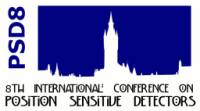Speaker
Mr
Neil Murray
Description
The CCD247 is the 2nd generation of high resistivity device to be manufactured in e2v technologies plc development programme. Intended for infrared astronomy, the latest devices are fabricated on high resistivity (~8 kΩcm) bulk silicon, allowing for a greater device thickness whilst maintaining full depletion when ‘thinned’ to a thickness of 150 μm. In the case of the front illuminated variant, depletion of up to 300 μm is achievable by applying a gate to substrate potential of up to 120 V, whilst retaining adequate spectral performance. The increased depletion of high resistivity CCDs greatly improves the quantum efficiency (QE) for incident X-ray photons of energies above 4 keV, making such a device beneficial in future X-ray astronomy missions and other applications. The X-ray QE of a CCD is the percentage of incident photons that are converted into electron-hole pairs and sampled by the device. This is practically measured for a range of incident photon energies to determine the X-ray sensitivity of the CCD by comparing the flux measured by the CCD at specific energies to that of a calibrated reference detector illuminated by the same source. The relative difference between the flux measured by the CCD and the calibrated detector is used to ascertain the absolute X-ray CCD QE. Here we describe the experimental setup and present results of X-ray QE measurements taken in the energy range 2 keV to 20 keV for a front illuminated CCD247.
Author
Mr
Neil Murray

